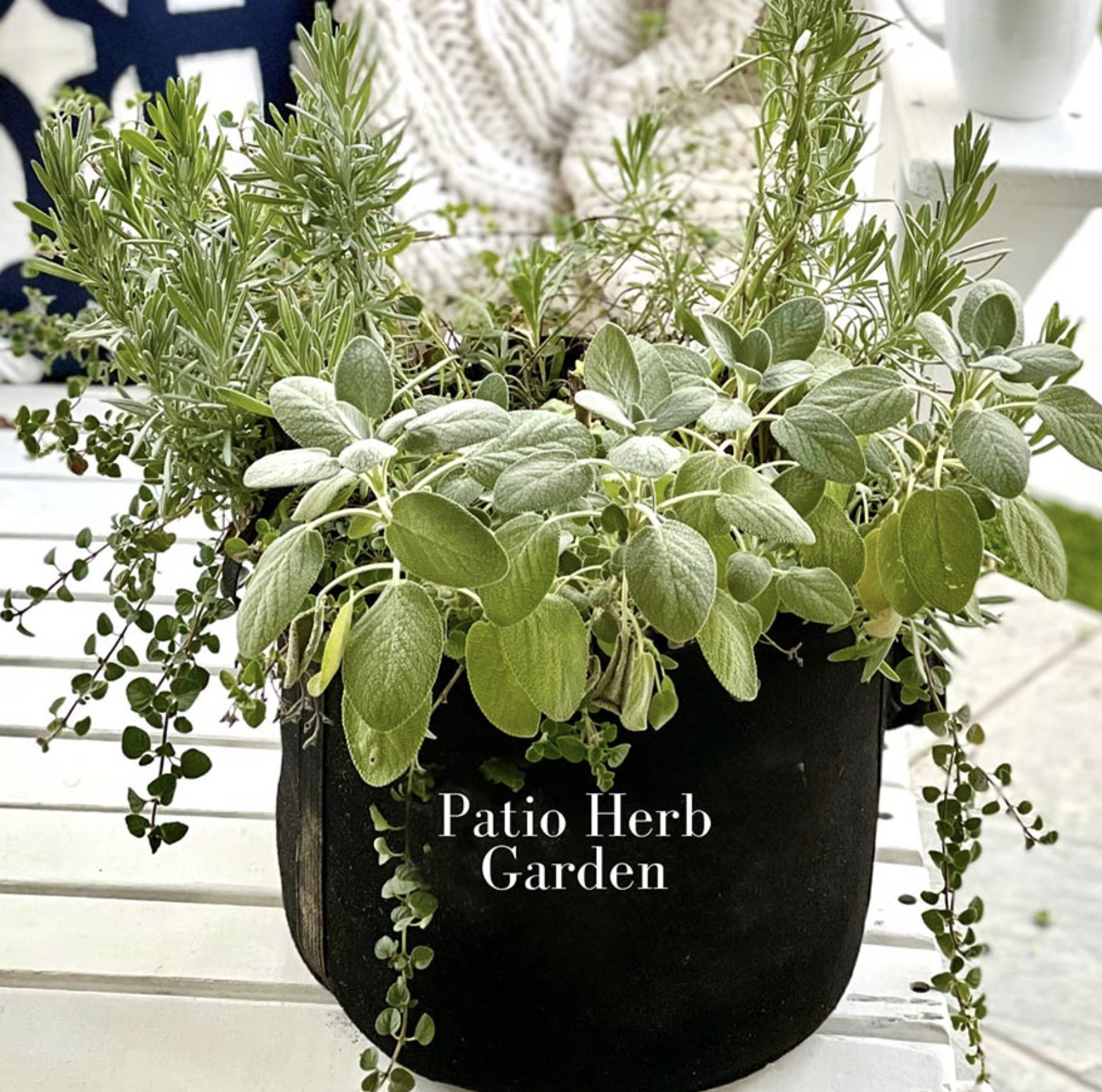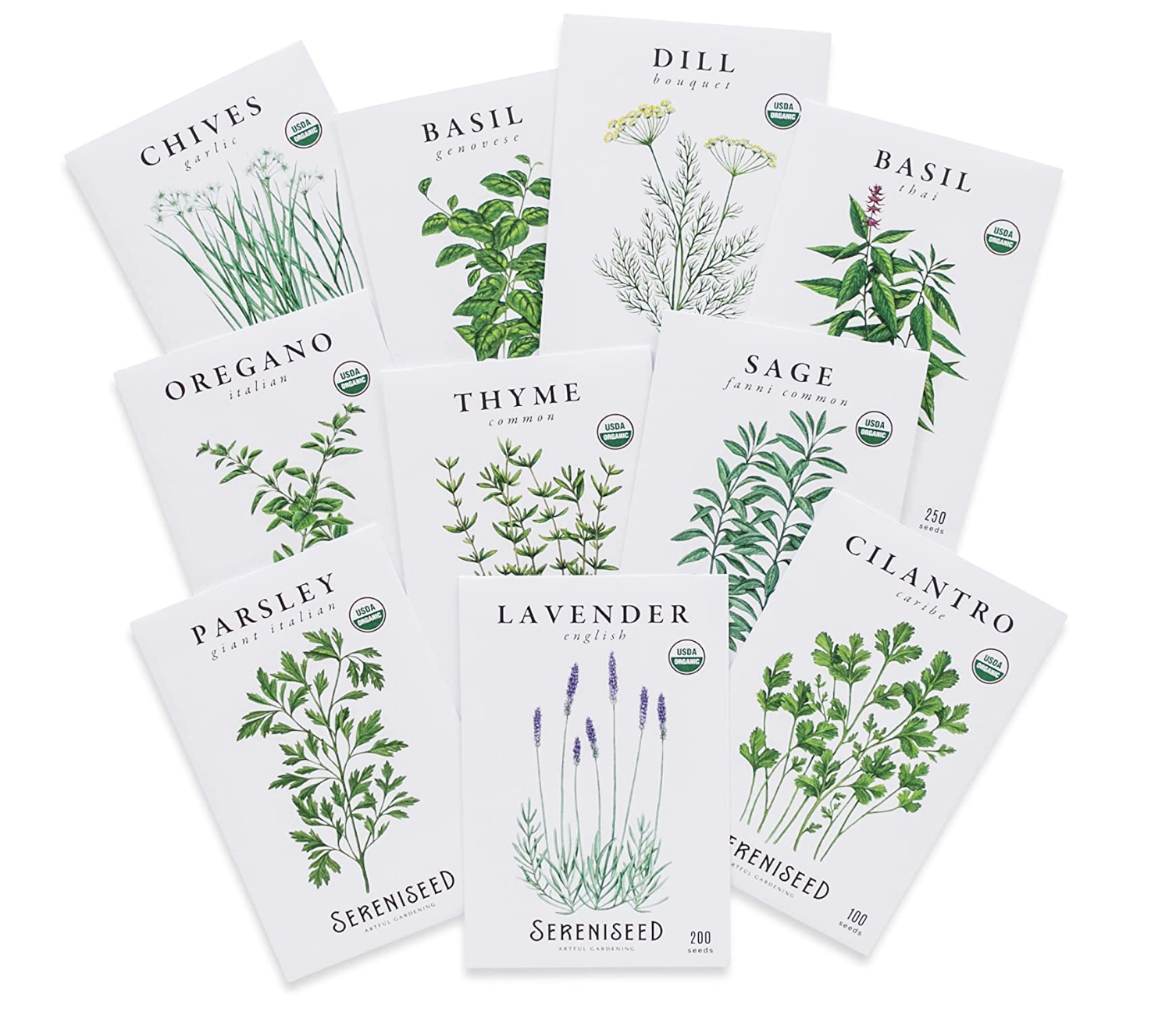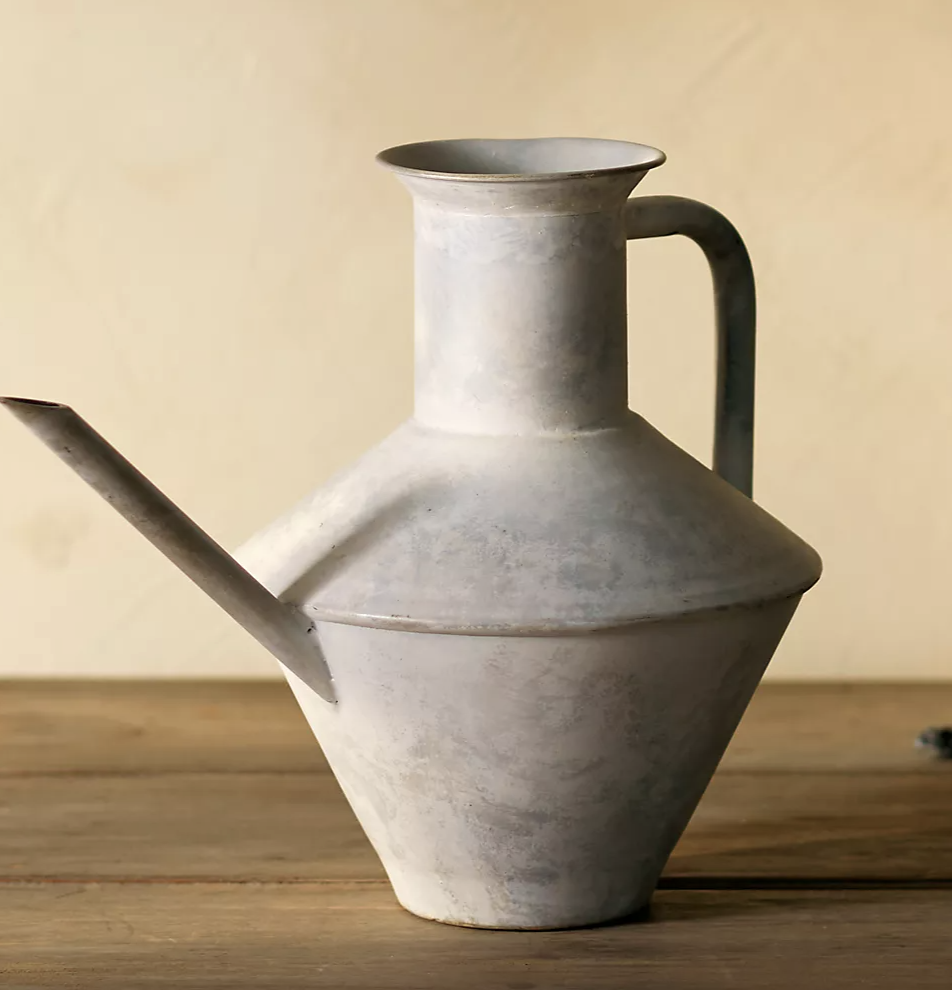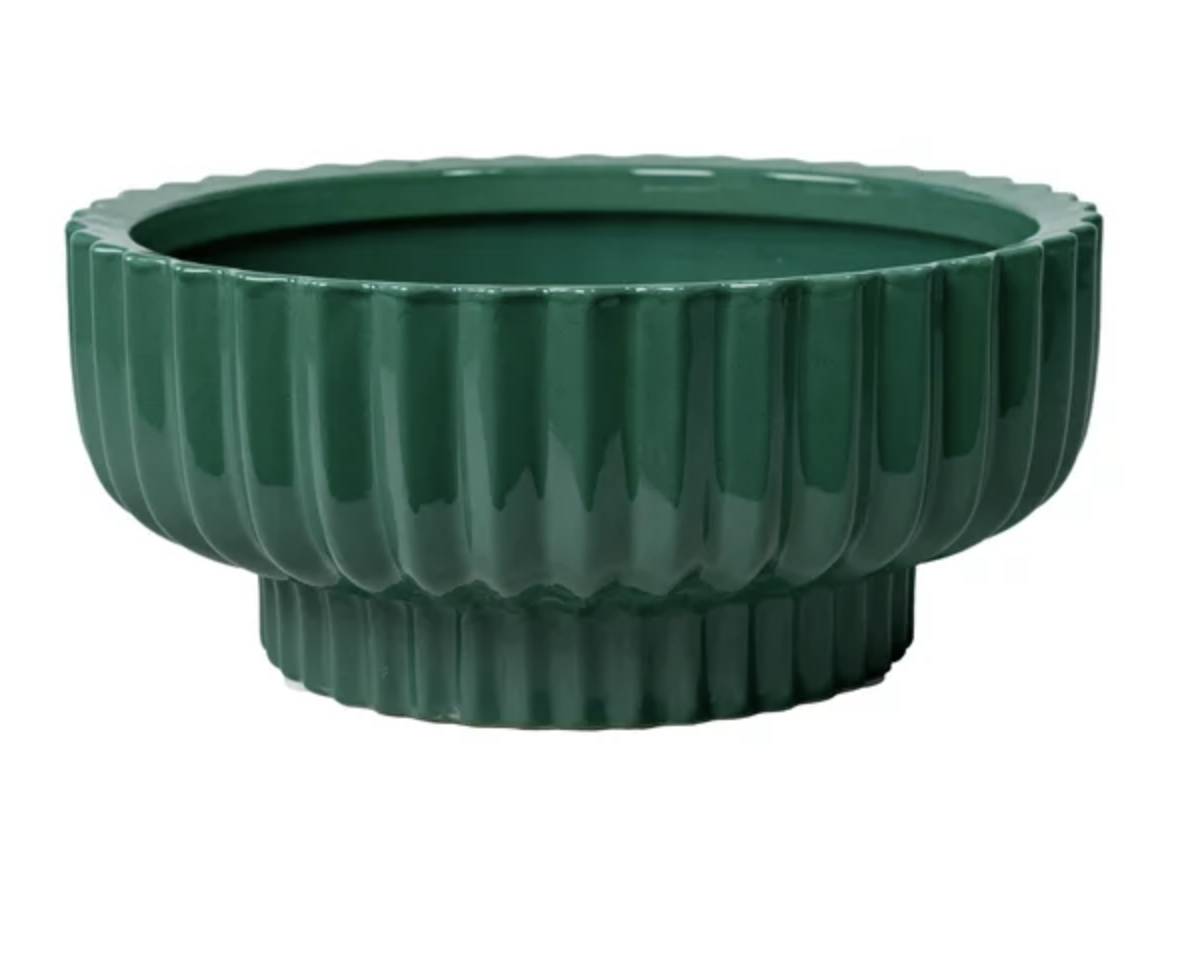10 herb garden ideas that are as bountiful as they are beautiful (and super easy to maintain)
Whether you have green thumbs or just want to grow some low maintenance edible plants, herb garden ideas are perfect for any size, space and any ability


It is a dreamy setup, being able to reach out your window or meander down your garden to pick out herbs to throw into your cooking or adorn your evening tipple. And it's actually a dream that's really easy to achieve because the great thing about herb gardens is anyone can manage one. No matter what the size of your outdoor space, no matter what your gardening skills are, growing herbs is really accessible.
Whether you're container gardening or filling beds herbs can thrive on a balcony, a courtyard, even a window ledge. And as well as tasting great and having a beautiful fragrance, they can look lovely too and be turned into a real feature of your backyard, kitchen or window sill.
10 herb garden ideas
Here you'll find ideas to suit whatever your set up, whether you are looking to fill a window box, or have the luxury of space, herbs are great for any kind of garden and gardener. Plus, we've spoken with the experts and got their tips and tricks for growing a beautiful herb garden that will add greenery to your outdoor space and flavor to your cooking.
1. Grow herbs you know you love and will use regularly
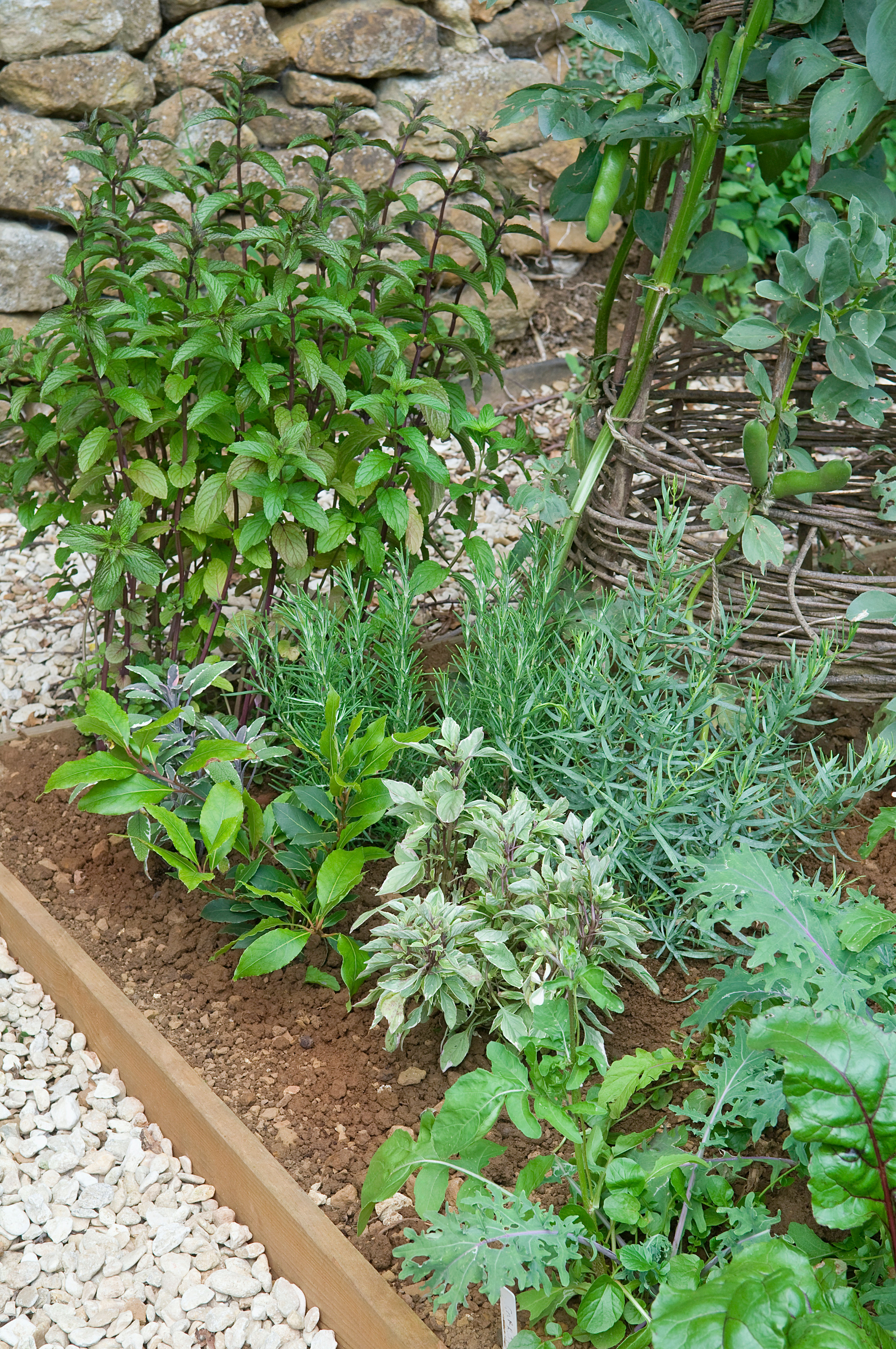
Because as well as looking lovely, herbs are meant to be used. So start by planting up herbs you are already using regularly. Garden designer Lottie Delamain's advice when planning a herb garden is 'think about what you love cooking with, as you’re much more likely to look after it and want to maintain it if you reach for it regularly. And think about growing things you can’t easily get in the supermarket. This isn’t necessarily rare and hard to grow herbs, but maybe variations on a herb you like, such as flat leaf orcurly parsley, or chervil.'
'Always plant plenty of it, because it’s demoralizing if you grow basil to make a pesto and it’s gone in one fell swoop! If growing from seed, repeat sowing through the summer will mean you have new plants to replace old. Woody herbs (rosemary, thyme, marjoram, sage, oregano) are great no hassle herbs that you can just plant and generally forget about,' adds Lottie.
Jekka McVicar, (a.k.a Queen of Herbs who currently curates herb gardens at Riverstone) agrees that you should 'start by trying to understand what you wish to use herbs for, and I’d encourage you to only grow what you will use in your kitchen. For example, there is no point in trying to grow Coriander if you cannot stand the taste!'
'However, if you are a fan of Rocket Pesto, then maybe only one plant is not enough. The first thing to decide is where you wish your culinary herb garden to be. The best site is a sunny area that is easily accessible to the kitchen - and the importance of this is never clearer than when it is raining! Then you can start to work out what will grow in this space.'
2. Be sure to pick a sunny spot for your herb garden to thrive

'Think about how much sun you get in your garden,' advises Alex Mitchell (a.k.a The Edible Gardener). 'Aromatic Mediterranean herbs such as rosemary, thyme, basil, marjoram and sage really do need a lot of sun to grow well and produce the natural oils that give them their amazing scents and flavor – not to mention the flowers that bees are drawn to.'
The Livingetc newsletters are your inside source for what’s shaping interiors now - and what’s next. Discover trend forecasts, smart style ideas, and curated shopping inspiration that brings design to life. Subscribe today and stay ahead of the curve.
'Herb gardens are therefore usually in sunny parts of the backyard or in pots on a sunny terrace. Herbs look great in large terracotta pots in groups and for most of us four of five of our favorite ones are all the herb garden we need.'
'The other thing to know about herbs is that most of them – certainly those Mediterranean ones mentioned before – do not need a rich fertile soil. In fact, they positively dislike anything too rich and moist. Don't add compost to the soil and if you have a sunny slope, you are on to a winner since this means any rain will drain away from the roots rather than sit there and make them soggy, which they absolutely hate.'
3. Grow herbs in pots to make them portable
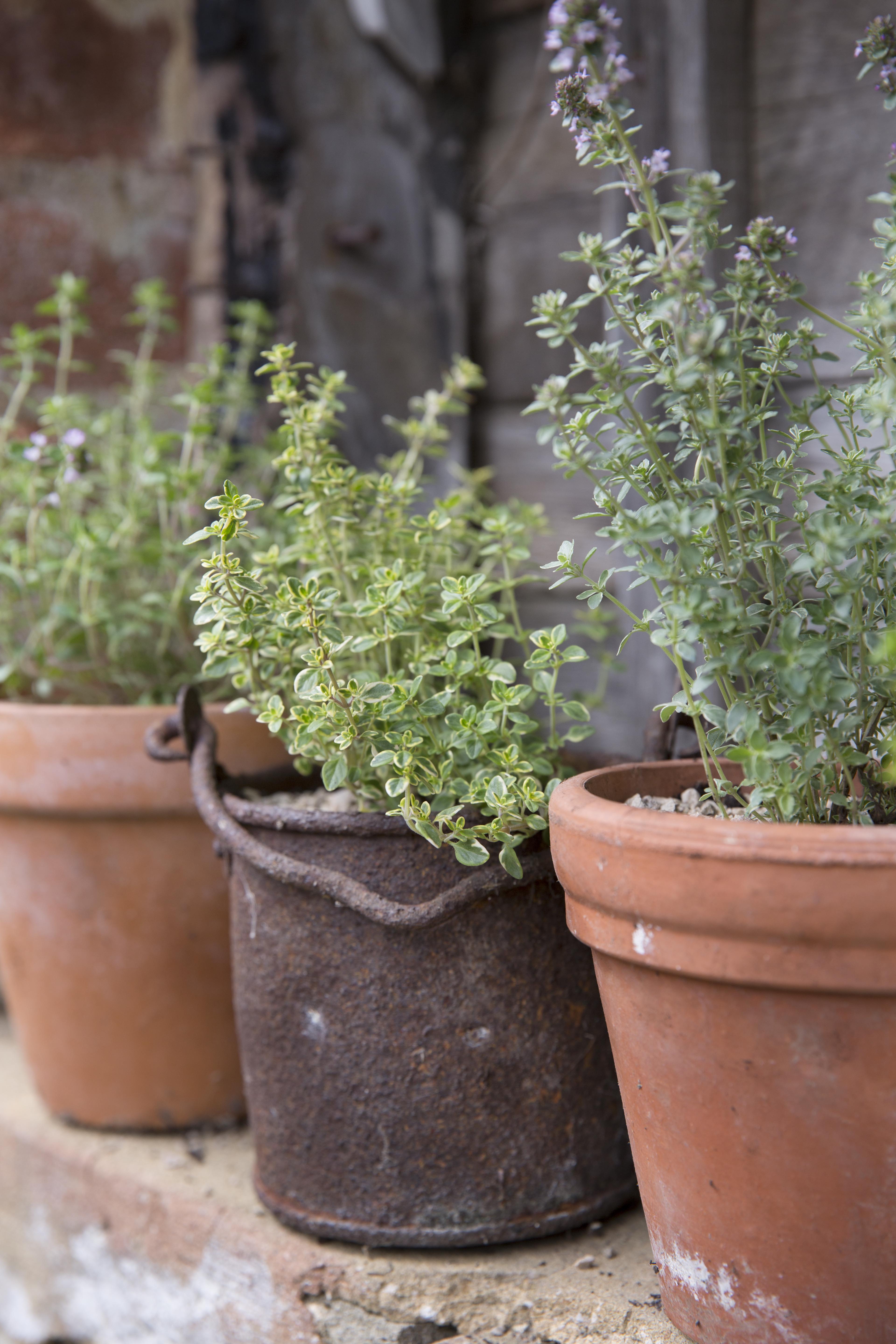
Herbs thrive in pots or window boxes and not only are growing your plants in pots ideal if you are short on space, it also means you can move your herbs around so they receive the maximum amount of sun they need to thrive.
'The main advantage of pot planting is that you can move the containers around if needed, including bringing them indoors in poor weather. For example, if you are growing Basil, this needs protection from frost and wind,' says James Scott, managing director, and principal designer at The Garden Co..
'Another advantage of using containers is that they can be placed near the kitchen door for ease of access when cooking, or on an apartment balcony. Watering herbs in containers can be an issue, so choose herbs that are tolerant of dry conditions such as rosemary, thyme and sage.'
Lottie's advice for picking the perfect positioning for your potted herbs is to 'think about where they come from originally. For example, all Mediterranean herbs need sun. Other herbs such as parsley and chervil can take some shade but not full shade. But as herbs are often grown in a planter, you can easily move them around to follow the sun. And always have them near the kitchen as you’re less inclined to go and pick them if it’s peeing with rain!'
'And all herbs can grow well in pots, specially soft herbs like basil and coriander which need shelter and might prefer a window sill than being outside when it’s cooler. They’re nice to have in pots to scatter around the garden, or even use as table decoration,' adds Lottie.
4. Create a herb container garden
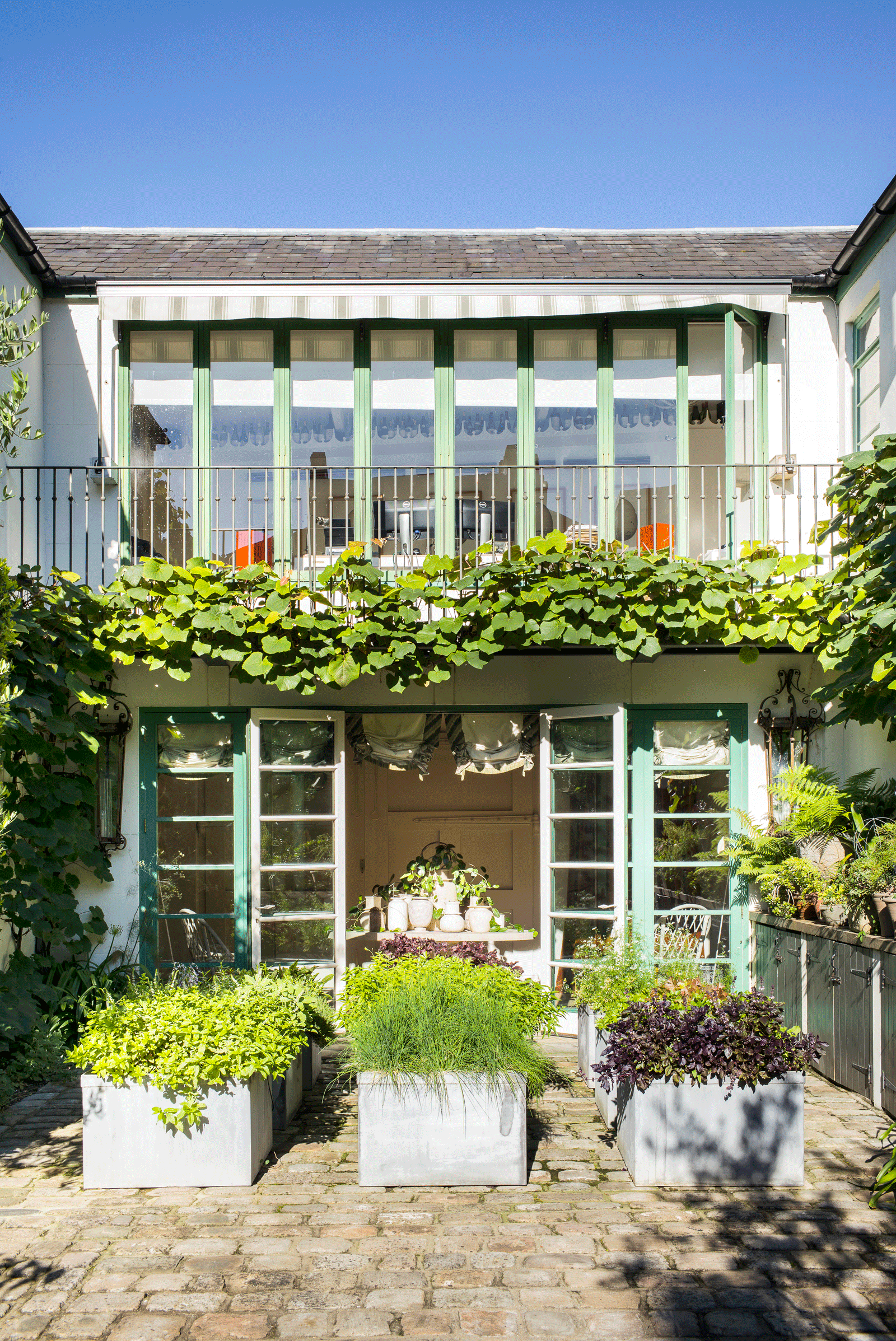
Container gardening is again a great option for growing herbs if you are short on space, but it can also make herbs more of a feature of your yard. We love the contrast of the modern concrete planters used here and the wildness of the herbs spilling over the edges. But versatility is a huge benefit of creating a container garden, you can create something to suit your own personal style
Sara Gatanas, of The Urban Garden Center NYC says, 'Using a good organic container mix is a great start when growing herbs, and proper drainage in your container is important. Remembering to water regularly and thoroughly is another critical factor. Often the biggest culprit in an unsuccessful container garden is water! People give too little water and many times, too often. Depending on where your container is, you might water less because the soil is not drying out. Herbs don't want to sit in wet-damp soil constantly. They also need to have the water reach their roots.'
'Containers placed in a bright, sunny spot will also help them flourish – vitamin D does wonders! If you're on a terrace high up or have full exposure, some herbs don't do well with too much wind so you might need to move them to a protected area. A lot of herbs are pretty easy to maintain and certain ones are drought resistant, so forgetting about them for a weekend might not be the end of them.'
'The secret to a successful herb container garden is to situate pots in a way that more shade-loving plants such as mint can bask in the dappled shade of sun-loving plants like rosemary. By having containers of different sizes you can create a visually stunning herb corner that utilizes the different layers that herbs provide, from creeping thyme on the lower levels, to a huge bronze fennel acting as a canopy.' adds gardener Huw Richards.
5. Upcycle disused items to turn a herb garden into a feature
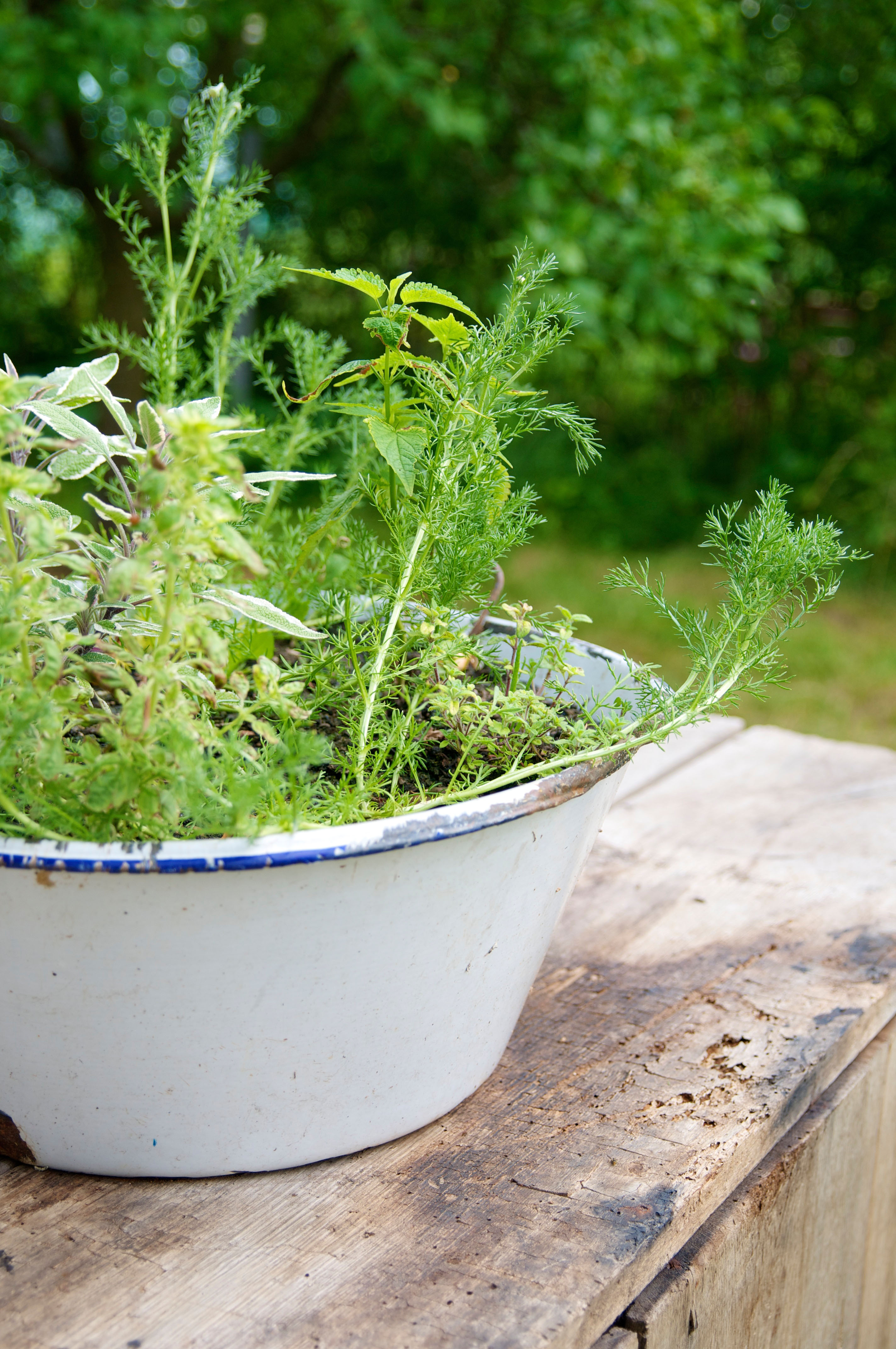
So we've established herbs can grow happily in containers. But a 'container' can mean a myriad of things and you can create some beautifully unexpected displays using second-hand pieces that you can either salvage from your home or source from junkyards.
We see a lot of herb gardens grown in old baths or sinks. And vintage chimneys with a whole host of greeny spilling over the top. But for a similar look we love the idea of popping a bowl, ceramic, enamel, whatever (just make sure you drill holes in the bottom) and filling it with a mini herb garden. Perfect if you are short on space and as a centerpiece for a garden table so you can grab herbs as you dine and drink alfresco. Dreamy.
5. Edge your beds with hardier herbs
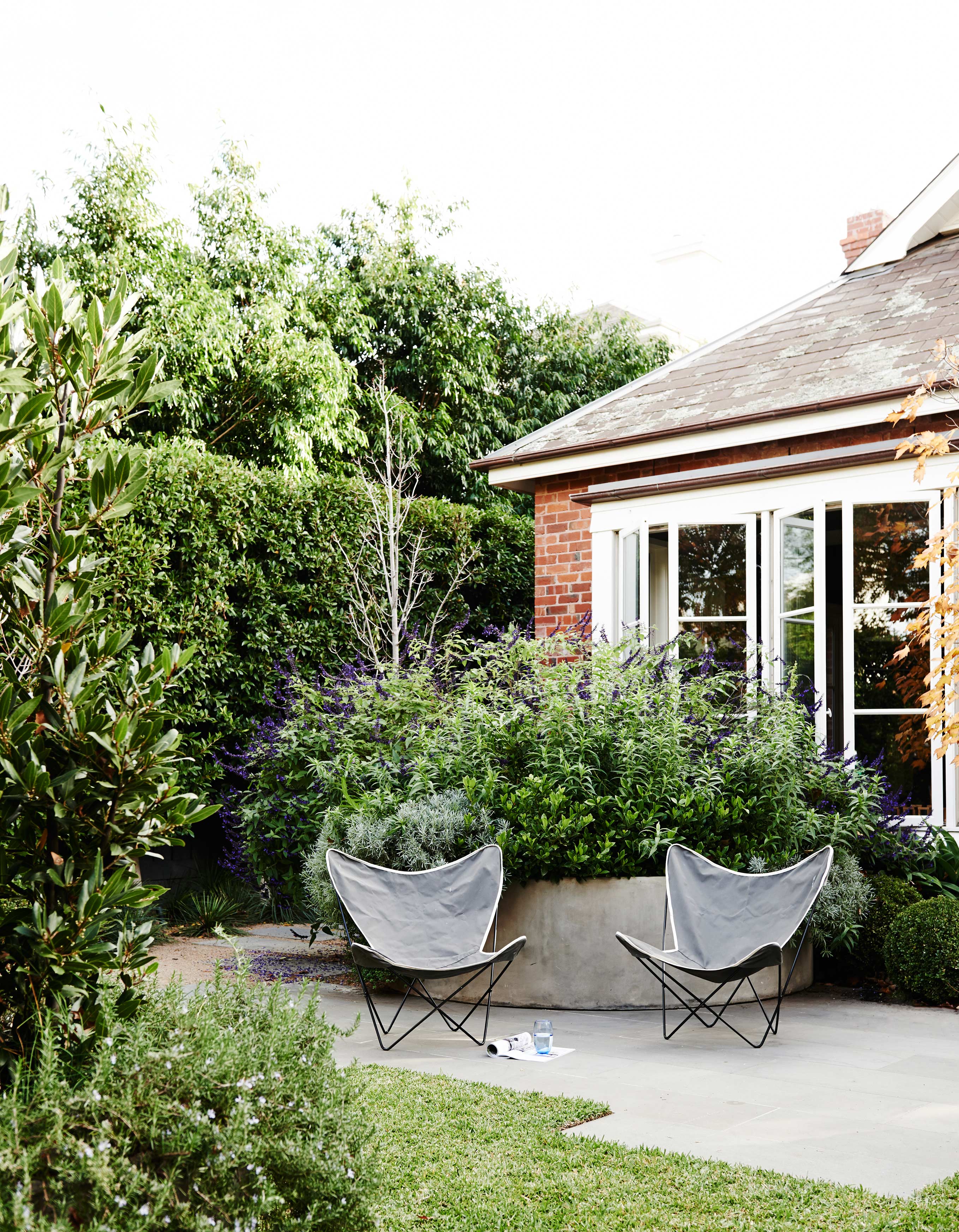
We love the laidback, informality of a herb hedge. It can outline and edge a flower bed or border but doesn't create as much definition as using say Box. Rosemary is the most popular option as it's a low maintenance garden herb and is easy to groom into some kind of shape if you wanted to.
'Rosemary has three main habits: prostrate, upright, and arching (a mixture of both). Therefore, for a hedge, unless you wish it to trail down a bank, I recommend a Rosemary with an upright habit.' explains Jekka. 'To plant a hedge, start with more mature, two-liter plants and planting at a spacing of about 18in-24in into prepared soil. To maintain Rosemary, cut back after flowering, but, as with other members of the Lamiaceae family, cut back only into the green, as it will not shoot off old wood.'
And there are other, softer herbs you could use as borders if you are after an even softer, deliberate unruly look. 'Herbs have been used for centuries to edge beds in a decorative way. Chives and curly parsley make particularly good neat borders.' suggests Alex. 'If you let oregano spread around the garden it will quickly make a soft, green border studded with pink flowers in summer that is a useful gap filler and can soften path edges. Fennel will self-seed around making tall feathery statements around the garden. The bronze variety is particularly good with ornamental grasses.'
6. Pick herbs for their foliage (as well as taste) for beautiful displays
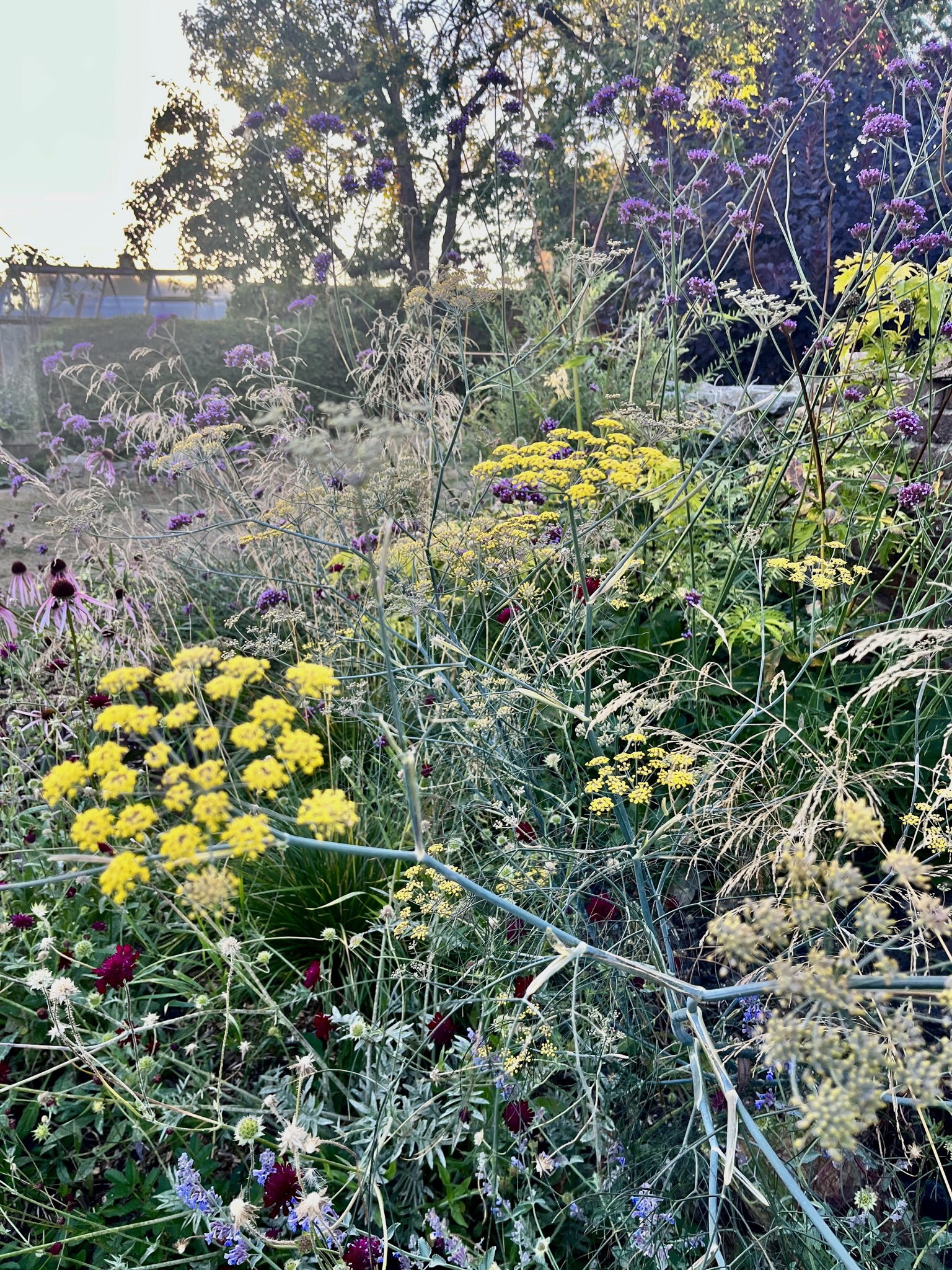
Of course, the main reason for growing herbs is that they can be used in the kitchen, but that's not to say these plants aren't beautiful in their own right and they don't have to be given their own dedicated section of the garden. The shape and texture and delicious smells of herbs can be every bit at home in a more decorative border. The striking shapes of certain herbs – fennel, rosemary, dill – can make them the perfect plants for a modern garden.
'Lots of herbs are grown for their ornamental value – rosemary has lovely blue flowers, and can be used as hedging or structure in a sunny dry bed. Sage leaves are beautiful on border edges or amid gravel gardens. Fennel is one of my favorite plants is grown for its foliage, flower, and seed heads and the fronds are a delicious dill substitute. With these, you could add any sun-loving Mediterranean plants, such as Phlomis russeliana, Verbena bonariensis, Salvias and Achillea,' says Lottie.
'And many herbs have edible flowers which work beautifully in a border alongside ornamental plants. Staples for summer salads include petals of bee balm (Monarda didyma), cornflower (Centaurea cyanus), marigold (Calendula officinalis) and borage (Borago officinalis),' adds garden designer Alexandra Noble.
'Lavender, Rosemary, Curry Plant, Lemon Balm, & Sage are all fantastic perennial herbs for filling out borders,' says gardening expert for Readly Huw Richards. 'They are perennial, look beautiful, and add lots of color, structure, and texture. One variety of sage I highly recommend is blackcurrant sage; it grows rapidly into a mini-bush and provides months of beautiful pink flowers. For annual herbs, my heart would always go for borage first. It grows tall, creates a profusion of vivid blue flowers, and is an absolute magnet for bumblebees.'
7. Or mix flowers to add more intense color
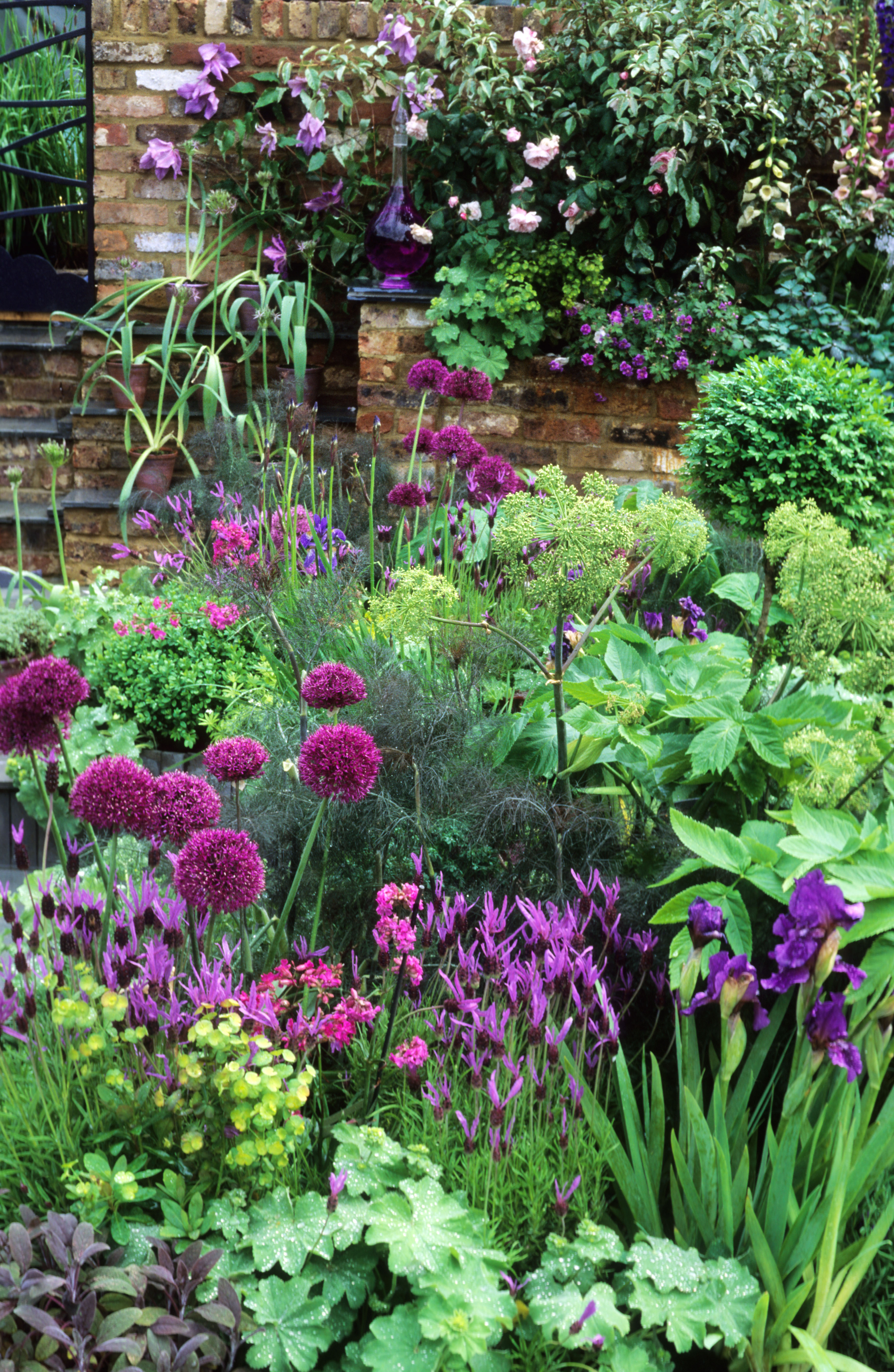
While herbs produce beautiful green foliage and some a hint of subtle color, a herb garden is never going to be the most... vibrant of gardens. So adding flowers into the mix will create a deliciously fragrant, colorful and varied garden.
'My personal choice for a container herb garden is to incorporate with flowers to really bring the container to life if you have space,' suggests The Balcony Gardener, Isabelle Palmer. 'Although some herbs do flower such as rosemary and thyme. It’s lovely to add wildlife into the mix throughout the growing season with nectar flowering plants such as cosmos, and lavender, and trailing plants such as Brachyscome multifida Blue and White. Remember to water and fertilize well for a healthy crop all summer.'
'Herbs have a long flowering season so they are great ‘doers’ in the garden. However, to extend their season you plant alongside other perennials that like the same position in the garden. For example, Rosemary mixes well with Santolina and Lavender. Bronze Fennel mixes very well with taller ‘daisy or spire’ perennials like Echinacea and Veronicastrum,' adds garden designer Emily Erlam.
8. Save on space with a vertical planter
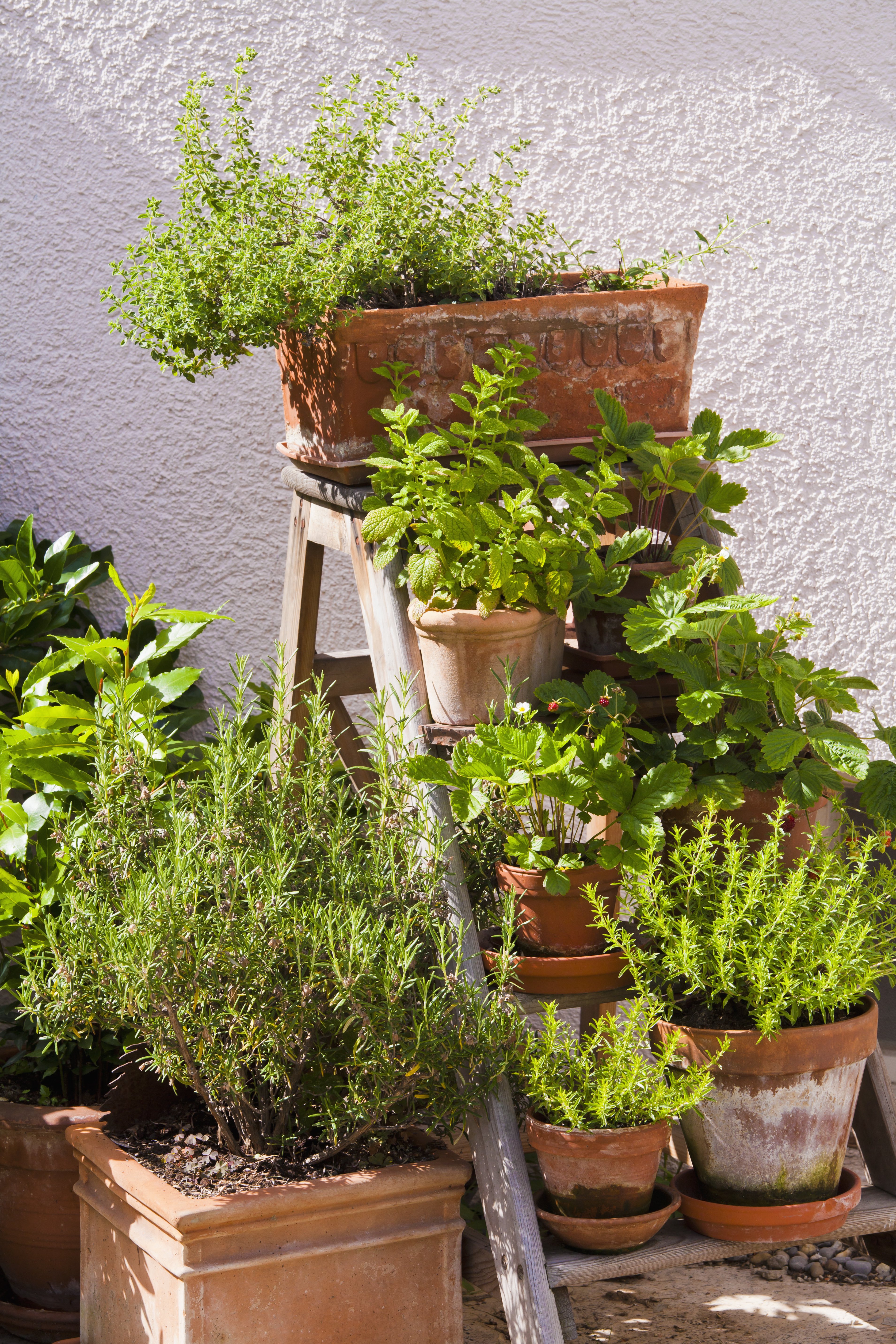
Just like in a small room, if space is tight in a small garden make use of vertical space. Wall planters, hanging baskets, window boxes, plant stands, you can even get living walls that come fully formed and planted with herbs. And we love this slightly more organic look of using a vintage ladder to house potted herbs. All will allow you to grow a herb garden in next to no space.
'When space is tight it’s often easier to take cuttings or even a shop-bought plant to give your herbs a head start rather than growing from seed. Using a clean pair of scissors, take a cutting just below a leaf node, so that you have a stem a few inches long. Prune away the bottom leaves, and simply pop your cutting into a glass of water and leave to root. Once roots have developed, you can plant your herb into a container of compost, firm down soil with your fingers,' suggests Isabelle Palmer.
Alex Mitchell agrees you are better off 'buying small plants rather than growing from seed. In pots, thyme, chives, and mint – again started from small plants – are very undemanding. Parsley will also grow well in pots but make it a large one since they have a long tap root and can grow quite large.'
And be wary of growing mint in a setup like this. Mint goes mad. 'If you are growing mint remember it is a very vigorous grower and will easily take over a container or small space so grow it within a pot inside the container or plant separately.' advises Isabelle.
10. Go traditional with raised beds
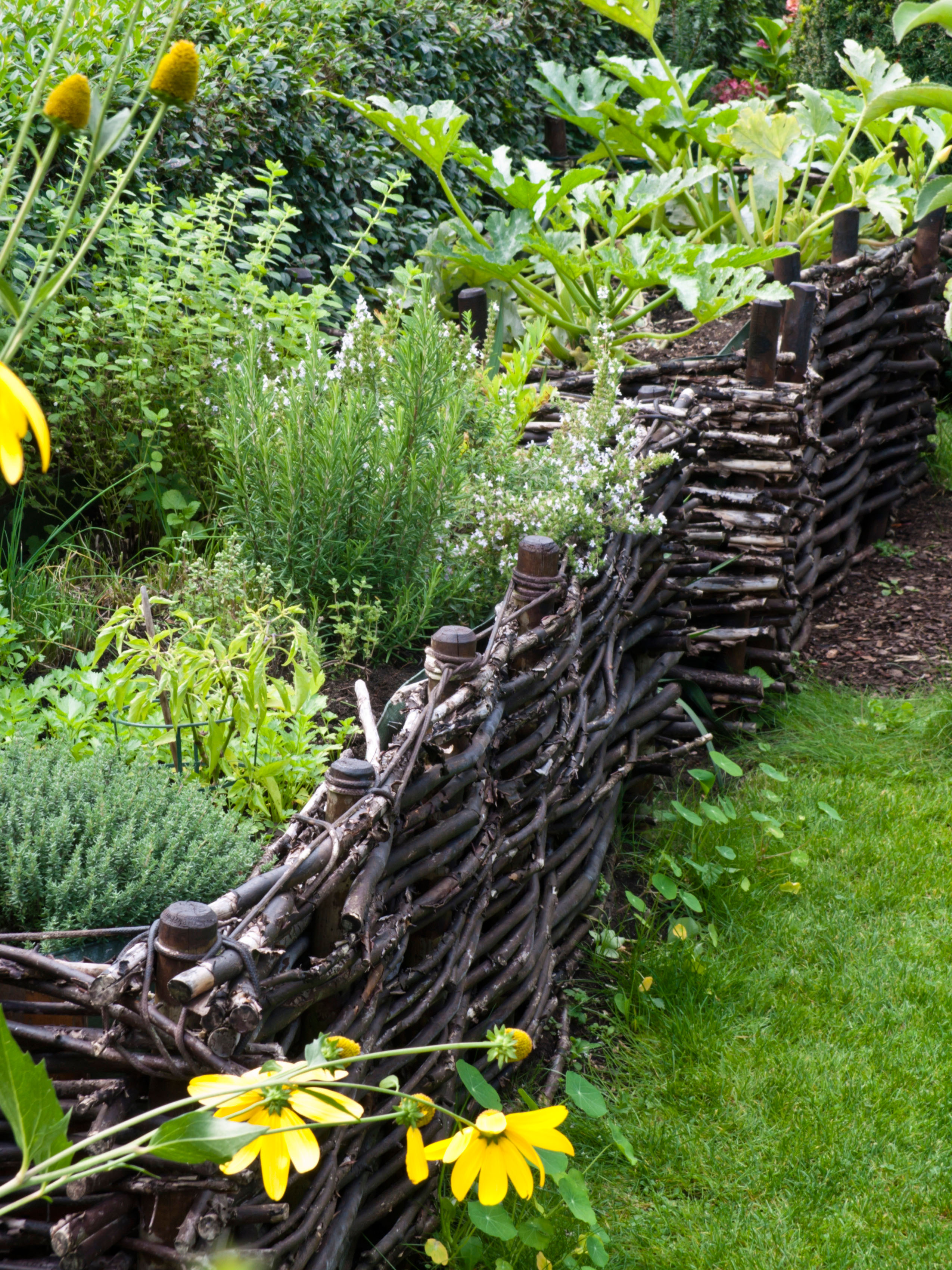
If you have the space for a raised bed they are perfect for growing herbs as you can adjust the composition of the soil, unlike if you were planting them straight into borders. Plus they look lovely too, especially if you go for a weaved willow edging as seen here – it gives a more organic feel that using sleepers.
When planting up your herb bed consider the practicalities – you are going to need to access all the plants to harvest them. So if your bed is too deep to be able to comfortably reach the whole plot, add stepping stones a point that make sense for your space. And plant your herbs in height order, taller plants towards the center or the back and shorter ones nearer the edges. Lastly, group herbs together based on their similar growing conditions.
Herb garden essentials to buy now
What are the best herbs for beginners?
'Herbs are generally easy to grow and therefore provide gardening novices with a wonderful opportunity to start growing their own edible produce,' says James Scott. 'Some of the easiest herbs to grow include:
Parsley – it is hardy over the winter and very useful in many dishes – not only the leaves but also the stalks for adding flavor to stocks. Parsley plants last for two years. Buying parsley in the supermarket can be very expensive compared to growing your own.
Rosemary is a popular flavor, an ornamental plant that is easy to look after.
Sage – providing there is sufficient sunlight.'

Formerly the Digital Editor of Livingetc, Hebe is currently the Head of Interiors at sister site Homes & Gardens; she has a background in lifestyle and interior journalism and a passion for renovating small spaces. You'll usually find her attempting DIY, whether it's spray painting her whole kitchen, don't try that at home, or ever-changing the wallpaper in her entryway. She loves being able to help others make decisions when decorating their own homes. A couple of years ago she moved from renting to owning her first teeny tiny Edwardian flat in London with her whippet Willow (who yes she chose to match her interiors...) and is already on the lookout for her next project.
